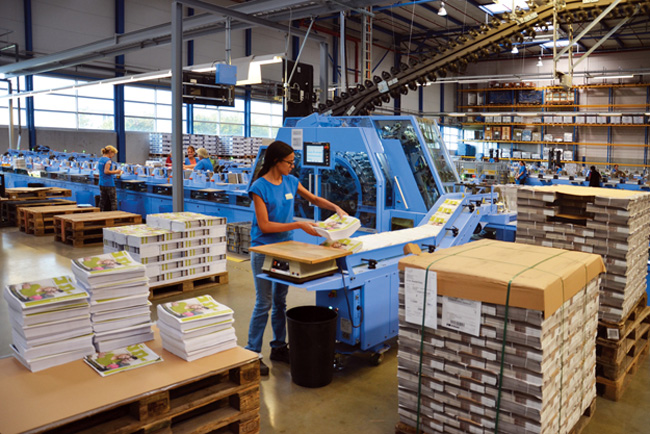Redacción Alabrent
t was just over six years ago that Direct Mail Company launched its carrier medium IN with unaddressed direct advertising in a limited geographical area. The first issue of IN with a run of 115,000 copies was dispatched to mailboxes in the canton of Basel-Landschaft and the Thun agglomeration in the Bernese Oberland on August 6, 2008.Those are figures that Martini Keller, Deputy Managing Director and COO at DMC, which is fully owned by Swiss Post, can chuckle at today. The innovative direct marketing specialist’ strategy of focusing on machine production and central set production has paid off.
Currently some 4,500 mail carriers deliver 1.3 million IN sets to mailboxes twice a week on 6,000 delivery routes throughout Switzerland. That amounts to over 100 million IN sets and an insert volume of around one billion print products annually. That is despite the fact that 50 percent of mailboxes in Switzerland currently have “no junk mail” stickers.
Unaddressed Advertising Proves Successful
Keller believes that there are several reasons why unaddressed advertising remains a successful advertising channel.
- “Despite digital media, print remains a very effective form of advertising, because consumers don’t need to do research; instead, the offers are delivered free to their door and flicking through advertising materials can inspire them to make a purchase.
- Unaddressed advertising gives a high cost-benefit ratio.
- The advertising reaches consumers quickly.
- This form of advertising is relatively cost effective because increasingly precise data mean large distribution losses can be avoided.
- Attractive offers are also read by other members of the household. That means the number of customers that can potentially be reached is multiplied.
- In rural areas, in particular, consumers are less skeptical of advertising and the number of households that can be reached is greater.”
FlexLiner with Two FlexPack Systems
The over 100 million copies of the IN carrier medium and one billion inserts annually present major challenges for DMC, not only in terms of distribution, but also production, which is highly complex. Since its plant was opened in Niederbipp in the canton of Berne, the Swiss industry leader has relied on three SLS3000 inserting systems from Muller Martini. A few weeks ago, the first SL3000 was replaced by a FlexLiner with two FlexPack bundle processing systems to meet the rise in production volume. The aim of the investment, as Zihlmann emphasizes, was to “achieve higher-quality end products together with an improved performance”.
According to the DMC Production Manager, that largely comes down to the FlexPack. “Following our thorough tests, that played a key role in our investment decision. A traditional compensating stacker has certain difficulties when it comes to our special products because of its torque and the centrifugal forces of the paper. The FlexPack is an order of magnitude better for us.”
Applying, Not Inserting
Two other important factors contribute to the increase in productivity. First, the novel concept of the FlexLiner, which involves the inserts being applied, gathered and then inserted in the main section as a bundle. “That means we no longer insert in the literal sense,” explains Keller. “Instead we apply, which reduces certain physical difficulties.”
Second, the two large-scale screens. They show the operators the remaining production time of any given production run and give them instructions for the following job so that they can prepare the feeder changes in time. “That enables us to prevent unnecessary chain idling and increase our productivity,” says Zihlmann, stressing the benefits of the two large-scale displays.
MPC with Connex.Info: Checking in the Rear-View Mirror
Mailroom Production Control (MPC) with Connex.Info from Muller Martini also provides valuable production data. “The system is convenient to use and gathers valuable information,” says Keller. “Checking in the rear-view mirror optimizes processes and allows us to provide our customers with proof of the correct makeup of the various products.”
“We’re convinced that we won’t see a decline in the importance of unaddressed advertising in the coming years,” says Keller. “Otherwise, we wouldn’t be investing to this degree.”



